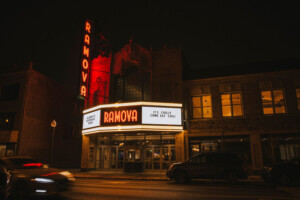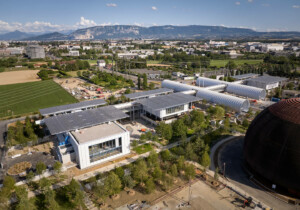Stirling Prize–winning architect Amanda Levete’s London-based firm AL_A has emerged as the winner in a year-long competition to design Serbia’s new Belgrade Philharmonic Concert Hall, a project described by Prime Minister Ana Brnabić as the “largest cultural infrastructure project in Serbia and the region” as well as “one of the largest in Europe itself.”
Managed by the United Nations Development Programme (UNDP) on behalf of the Serbian government and in partnership with the Office of the Prime Minister, the Ministry of Culture and Information, the City of Belgrade, and the Belgrade Philharmonic Orchestra, the competition yielded 37 design submissions from entrants spanning 15 countries. A total of six firms, including some cultural heavy-hitters, joined AL_A on the shortlist: Diller Scofidio + Renfro, MVRDV, Snøhetta, Spain’s Estudio Lamela, and Slovenian practice Bevk Perovic Arhiteki as runner-up.
Each of the finalist proposals was developed in response to a technical brief conceived by Arup; in addition to its involvement in the competition, the global engineering and design giant will serve as theatrical and acoustic designer for the roughly $120 million project. Also on the team is Lebanon-based Vladimir Djurovic Landscape Architecture (VDLA), engineering firm AFA Consult, and local architectural practice Zabriskie Studio.
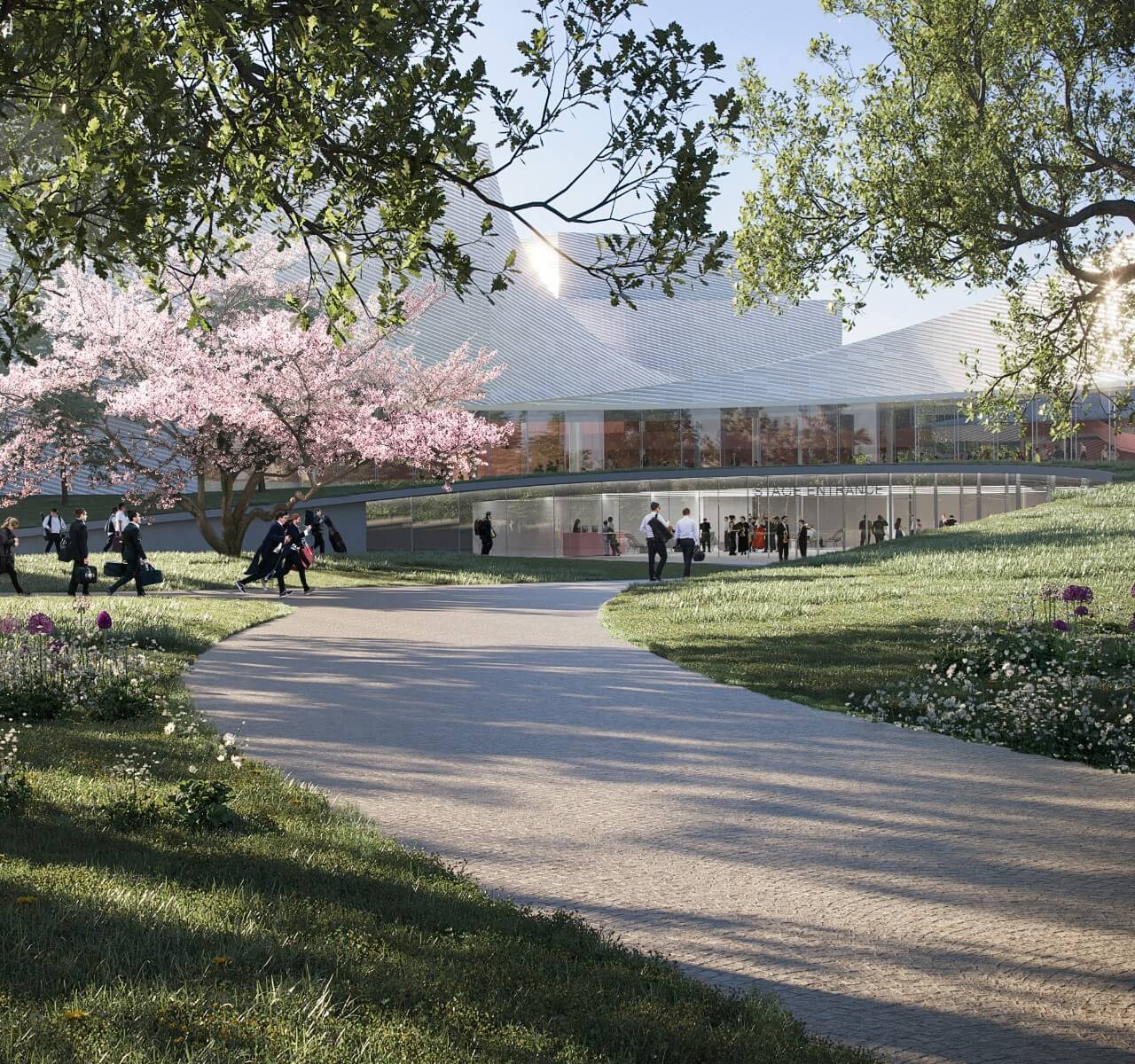
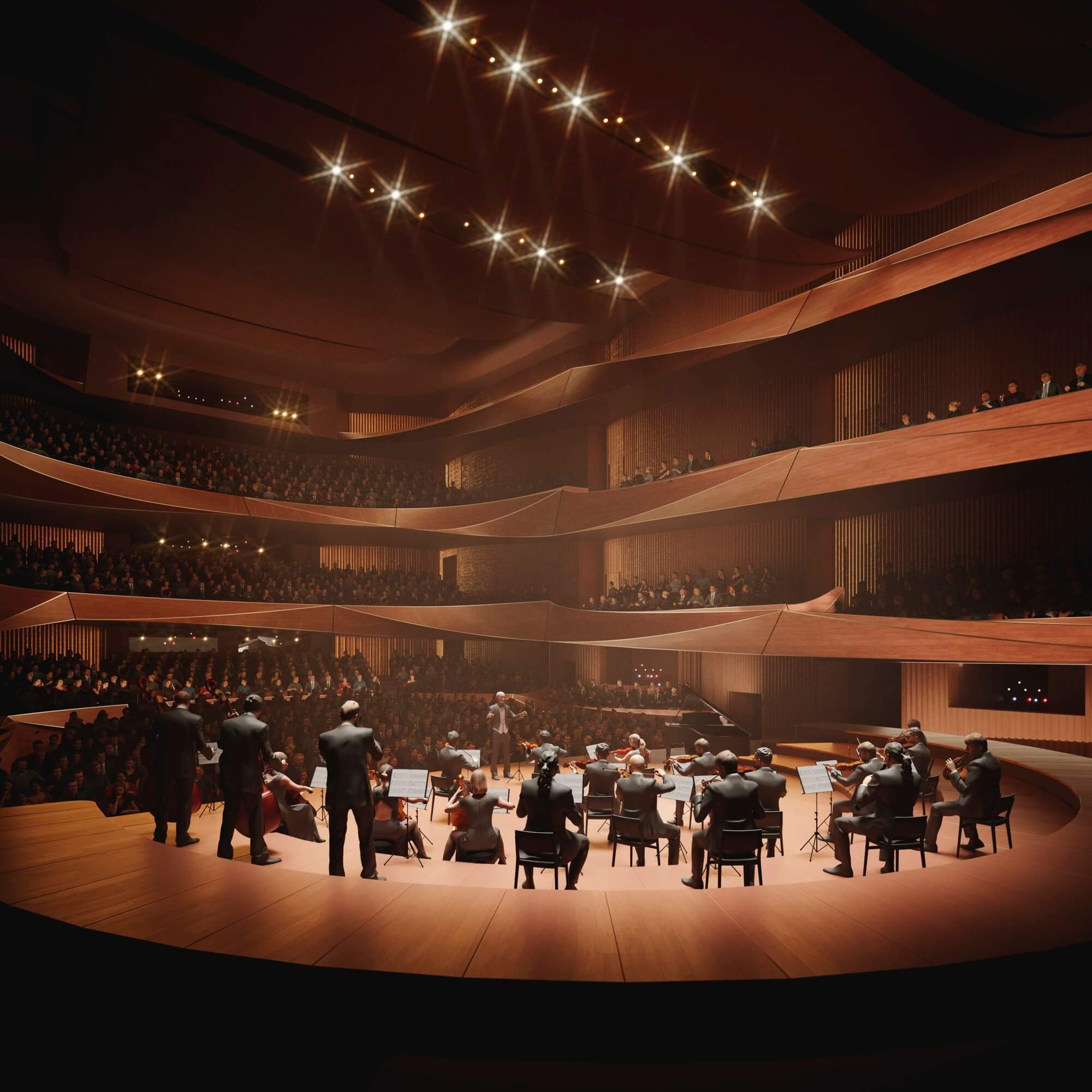
Said Welsh-born Levete in a statement shared by AL_A:
‘You couldn’t dream of a better site than this to message Serbia’s vision for the future. The magnificent setting of Ušće Park, on the banks of the River Danube, sends a powerful message about transforming and rewilding our cities to make them greener, more beautiful spaces. The Concert Hall will be an expression of harmony between nature, architecture and music, at a pivot point in Europe where East meets West. It will be a place where people from all places and cultures, of all ages and abilities, come together to delight in music from every genre.”
Prior to establishing AL_A in 2009, Levete, a veteran of Richard Rogers & Partners, served as a partner of London-based architectural think tank and design practice Future Systems, which was started in the late 1970s by the late Czech-born neo-futurist Jan Kaplický and David Nixon, both of whom worked at Foster + Partners (then Foster Associates) at the time. Levete later married Kaplický after joining Future Systems in 1989. With AL_A, Levete has completed a number of notable commissions including the second MPavilion for the Naomi Milgrom Foundation at Melbourne’s Queen Victoria Gardens (2015); the Museum of Art, Architecture, and Technology (MAAT), a soaring kunsthalle in Lisbon (2016); the Exhibition Road Quarter at London’s Victoria & Albert Museum (2017); and an award-winning Maggie’s Centre outpost in Southampton, England.

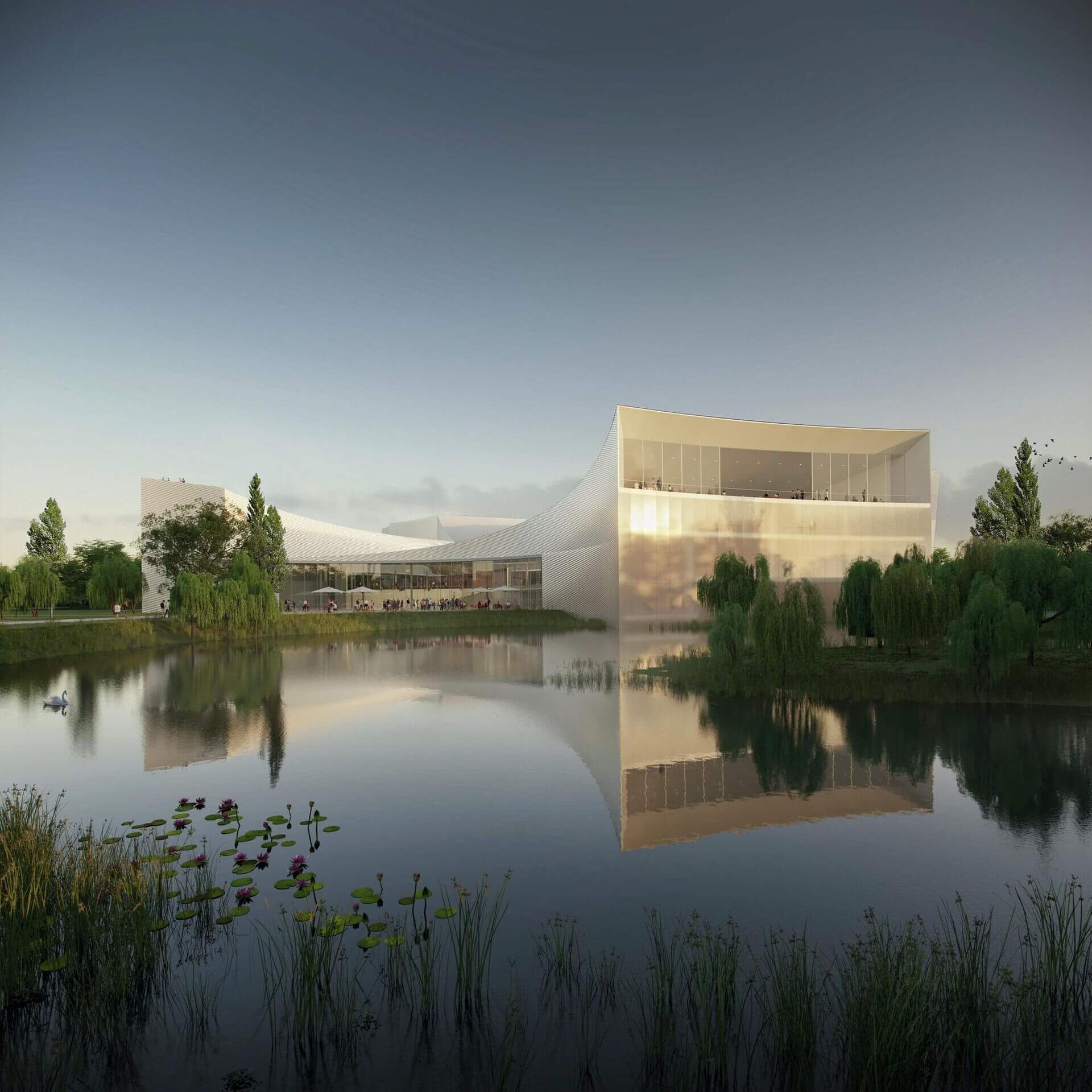
As for AL_A’s winning design for the Belgrade Philharmonic Concert Hall, the roughly 215,000-square-foot complex is planned for Ušće Park, a sprawling green space next to the Palace of Serbia in the New Belgrade district and near the Confluence of the Sava River into the Danube. The program is split between a quartet of undulating volumes flanking a central courtyard. Each building a—large performance hall with seating for 1,600 audience members and a 400-person orchestra and choir, a podium stage, a 400-seat recital hall, and creative center—will have a ”different character, celebrating different musical genres, attracting different audiences and encouraging diverse activities” per AL_A.
As the firm elaborated in its design statement:
“The four venues encircle a social space that forms the heart of the Belgrade Concert Hall, with shared back of house facilities positioned below the newly created town square. Through this arrangement, we create a building with no front and no back resulting in an architectural panorama. The building and the new shared social space at its heart gather under a draping canopy that spans each venue, resting softly in between. Through this expressive form, the building speaks of the movement of music. The materiality of this envelope will create a rippling effect that mirrors the dappled waters of the River Danube, reflecting the changing landscape through the seasons, and signalling a new monument of culture.”
Per the UNDP, the competition jury was chaired by a representative from the organization along with nine members, comprising “international and local architects, concert hall and competition experts, as well as representatives of the Government of Serbia and City of Belgrade.” UNDP’s goal in running the competition was to “ensure that, by its design, the Concert Hall would be a facility contributing to the social, economic, and environmental development” of Serbia.
The finalized design is expected to be completed by early next year; the completed Belgrade Philharmonic Concert Hall is set to make its grand public debut in 2028. The AL_A-led design team will receive about $10 million in fees, according to the Belgrade Philharmonic website.
The Belgrade Philharmonic is currently housed in a cramped temporary venue with a dearth of storage and rehearsal space that was built in 1967 and renovated in 2004.









